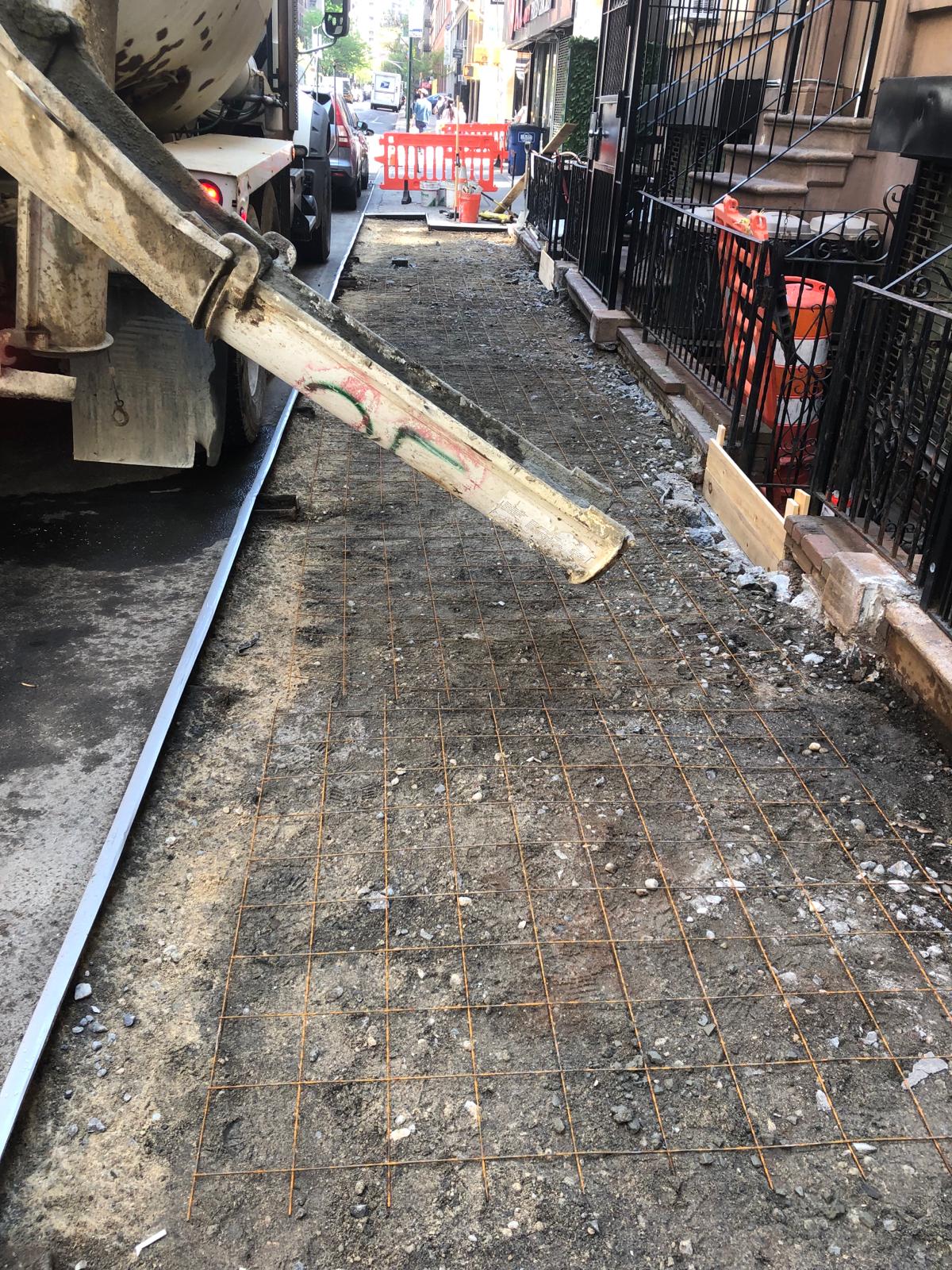The Bronx, a vibrant borough with a rich history, is a place where people walk. From bustling commercial districts to quiet residential streets, sidewalks are the arteries that connect us. But years of wear and tear, weathering the elements, and constant foot traffic can take a toll. Uneven slabs, cracks, and raised edges can pose safety hazards for pedestrians. This is where Bronx sidewalk repair comes in.
This article equips you with the knowledge to navigate the process of sidewalk repair in the Bronx. We’ll delve into:
-
Understanding Sidewalk Responsibility: Who’s on the hook for fixing that broken sidewalk?
-
Types of Sidewalk Damage: Identifying common problems and potential solutions.
-
The Sidewalk Repair Process: A step-by-step guide from inspection to completion.
-
Finding a Qualified Contractor: Tips for choosing a reliable and professional service.
-
The Cost of Sidewalk Repair: A breakdown of factors influencing the final bill.
-
Alternative Solutions and Preventative Measures: Exploring options beyond traditional repairs and how to prolong the life of your sidewalk.
Whose Sidewalk is it Anyway? Understanding Sidewalk Responsibility
In New York City, property owners are generally responsible for maintaining the sidewalk abutting their property line. This includes repairs for cracks, uneven slabs, trip hazards, and snow removal during winter months.
However, there are some exceptions. The Department of Transportation (DOT) is responsible for repairs in certain areas, like public sidewalks in parks or around traffic islands. Additionally, some property owners may be exempt from repairs due to hardship. The Department of Housing Preservation and Development (HPD) offers programs to assist low-income homeowners with sidewalk repairs.
Spotting the Signs: Common Sidewalk Damage and Solutions
Not all sidewalk damage is created equal. Here’s a breakdown of some common issues and potential solutions:
-
Cracks: Hairline cracks may not pose an immediate threat, but larger cracks can become tripping hazards. Hairline cracks can often be sealed with a concrete sealant, while larger cracks may require patching or mudjacking (pumping a slurry beneath the slab to lift it).
-
Uneven Slabs: Settling or tree root growth can cause slabs to become uneven. Minor unevenness may be addressed by grinding down the high spots. For more significant issues, lifting and relaying the slabs may be necessary.
-
Trip Hazards: Raised edges, protruding objects, or missing pieces of sidewalk can create dangerous tripping hazards. Solutions may involve leveling, replacing missing pieces, or removing obstructions.
The Sidewalk Repair Process: A Step-by-Step Guide
Knowing the typical sidewalk repair process can help you stay informed and manage expectations. Here’s a simplified breakdown:
-
Inspection: A qualified contractor will assess the damage and determine the necessary repairs. They will likely obtain a permit from the NYC Department of Buildings (DOB) if the work requires excavation.
-
Planning and Permits: The contractor will create a detailed plan outlining the scope of work and obtain any necessary permits.
-
Construction: The contractor will then perform the repairs according to the plan. This may involve breaking up damaged sections, removing debris, pouring new concrete, and ensuring proper drainage.
-
Inspection and Approval: Once the work is complete, a DOB inspector will visit the site to verify that the repairs meet code requirements.
-
Final Touches and Cleanup: The contractor will add finishing touches, clean up the work area, and remove any temporary structures used during construction.
Finding a Reputable Contractor: Qualities to Look For
Choosing the right contractor is crucial for a successful sidewalk repair project. Here are some key factors to consider:
-
License and Insurance: Ensure the contractor is licensed by the DOB and carries adequate liability insurance.
-
Experience: Look for a contractor with experience in sidewalk repairs, particularly in the Bronx.
-
References and Reviews: Ask for references from past clients and check online reviews to gauge the contractor’s reputation.
-
Estimates and Warranties: Get written estimates from multiple contractors and ensure they detail the scope of work, materials, and warranty information.
-
Communication: Choose a contractor who is responsive to your questions and clearly explains the project plan.
The Cost of Sidewalk Repair: A Balancing Act
The final cost of sidewalk repair depends on several factors, including:
-
Severity of Damage: More extensive repairs will naturally cost more than minor crack repairs.
-
Size of the Area: The square footage of sidewalk requiring repair will impact the overall cost.
Materials and Labor: The type of materials used and the complexity

